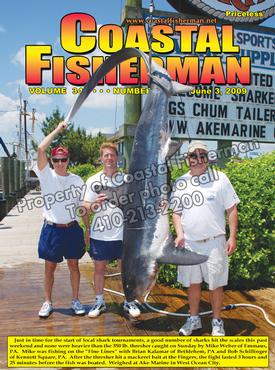


Article by Pat Schrawder
 VIDEO CHART DIFFERENCES
VIDEO CHART DIFFERENCES
The situation with chart plotters today is that there are several of them on the market and they have various features that might make you select one over the other such as size, price, waterproofness, etc. But one of the main differences is the type and brand of chart they use.
When these electronic charts were first introduced, people took whatever chart came with the unit. Now that chart plotter units have all developed very similar designs and features, much of the focus has settled on the charts themselves. Some manufacturers make the same model with the choice of chart style. There are two basic types of charts, raster and vector. A raster chart is an exact duplication of the paper chart that was scanned to produce it. A vector chart is one that is produced in layers of information so that the operator can select the data they want to see and eliminate the rest.
The industry standard and the one that most boaters prefer is the vector chart. These vector charts are created from raster charts. They take a NOAA raster chart, redraw only the coastline information, then create individual layers of all other NOAA chart information such as spot soundings, depth contours, nav-aids, etc. The two major competitors in the market for most major brands are C-map and Navionics.
Navionics has consistently maintained that their charts are more convenient for the user because they are “seamless” and redraw the screen image faster when zooming in from one area to another. C-Map maintains that this “seamless” technique sacrifices additional detail. Navionics believes that all the really important information is there.
Both C-Map and Navionics have enhanced charts that are impressive. They have taken their original charts and added to them special features. Navionics calls their best charts the “Platinum and Platinum Plus Series” and C-Map markets theirs as “NT+” Max and Max Pro. The list prices range from $499 down to $169 depending on the charts and the manufacturer.
Charts from both Navionics and C-Map contain some very similar features, each with their own little “twist” and nomenclature such as, Perspective 3D mode with pan & zoom; 3D and photographic chart views; Seamless coastal roads & points of interest; aerial photos & diagrams of marinas; Panoramic navigation photos & top down aerial photos; Dynamic Elevation data-land & bottom; 3D Bathymetric chart plotting; Fully animated tides & currents; Extended wrecks database; Marina port plans w/slip detail & facilities; Enhanced ports & service guide; Dynamic animated Nav-Aids; Geo referenced Coast Pilot Guide.
Last year, Furuno added their 3-D NavNet series to the mix – a unit that is preprogrammed with charts and needs no external chart card. However, the trade-off to giving you that data free is that its source is the Federal Government map data that may lag behind the others until it is periodically updated.
Not all charts work with all units. So you have to be very careful when purchasing a plotter. If you have seen a chart that you like, check first to see with which units it will be compatible. Don’t be fooled by first impressions either. There is no doubt that when you see a 3-D image on a display screen, it is truly impressive. The same could be said for the aerial views of ports and marinas. However, the fact that a chart contains these features does not necessarily mean they have them for the area where you do your boating. You would be well advised to see the actual chart for your area first.
Also, compare the price of the chart to your expected use. While the more expensive charts are pretty “snazzy”, so is their price. You could argue that, once you’ve seen the aerial shot of the marina, you won’t likely continue to look at it. Similarly, the 3-D view is a representation of the bottom contour based on depth readings. It is not the actual “real time’ bottom display. We all know that seabed bottoms continually shift so be very careful to rely on your depth finder and not your 3-D plotter to keep from running aground.
Over time, I think all manufacturers of charts will continue to add features because the buying public will ask for them, even if they don’t really use them. In the meantime, I would be reluctant to buy a plotter based solely on the chart. It is certainly a major factor but find the best plotter you can with the features you want and a brand name you trust. Then select the best chart for my area and, if it has everything you are likely to need, go enjoy it. There is every reason to think that you will be able to get a new chart later on that has some newer features and will allow you to update.
Pat Schrawder and her husband Larry are owners of L&L Marine Electronics on Golf Course Road in West Ocean City.